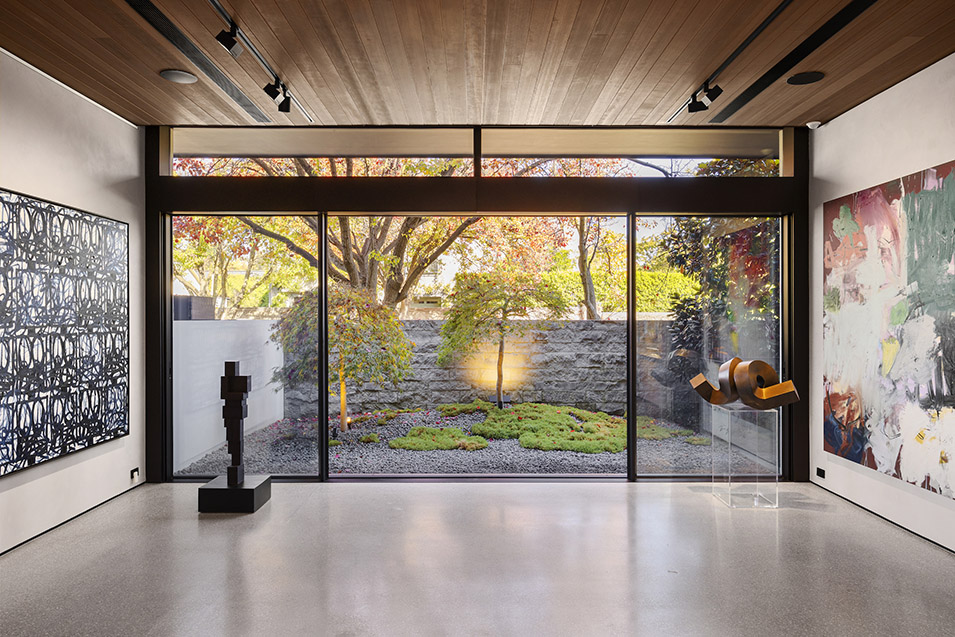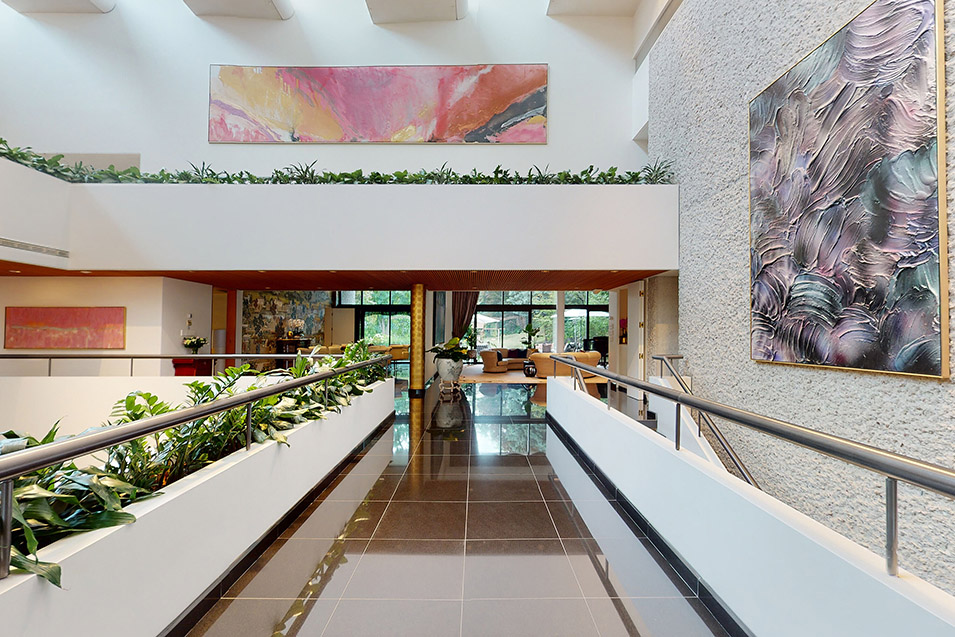Interiors needn’t be a white box for displaying paintings or sculptures, writes Elizabeth Fazzare. Instead, designing your room around an artwork brings a more personal and purposeful look

Melbourne, Australia | Peninsula Sotheby’s International Realty
With art fairs such as Frieze London, Paris+ par Art Basel, Art Toronto and The Art Show (ADAA) taking place this October, many homeowners will be adding to, or building, their collections. Though a white box gallery may be art’s stereotypical display, replicating that environment once a beloved work goes to a buyer’s home isn’t always possible—or necessary. A modern, pared-back room can certainly center attention toward paintings, sculptures, or art installations, but so too can the juxtaposition of a historic house’s rich material palette or a traditional home’s delicate details. What’s most important to a home with a great art collection is intentional design.
“None of our projects really have any painted walls at all,” says Edward Yedid, a partner, designer, and art advisor at architecture and design studio Grade in New York. “If they’re white, they’re some other material like fabric, wood, lacquered panels, or plaster.” And yet, his residential clients have some of the most incredible artworks on view at home, from a 70-foot-tall Sheila Hicks sculpture installed at the center of a historic New York City townhouse stairwell to a Pierre Soulages painting that also inspired the metal patterned front door of a contemporary home in Aspen, Colorado. Instead of setting blank-slate backdrops, Yedid and fellow Grade partner Thomas Hickey utilize interior architecture to the art collection’s advantage, matching pieces to existing features or purpose-building paneling, niches, or other structural environments to display them.

Toronto, Canada | Sotheby’s International Realty Canada
“You want the art to be the feature and then the space around it to support,” says Hickey, an architect. For sculpture, “you might want to have more of an apsidal [semicircular recessed] space where you can walk around it,” he suggests. For paintings, flat walls are a must. Plinths can help sustain heavy pieces that need a platform to bring them up to eye level. A custom étagère shelving unit can showcase several smaller works while still allowing each one the square footage to shine. “We don’t overcrowd the art by placing a lot of things around; we want to make sure it’s got its space to breathe and be seen,” he adds.
Lighting is also an important factor. On a six-acre estate currently on the market on Long Island’s North Shore, original architect Norman Jaffe created a postmodern glass-and-stone home in 1974 that blurs the lines between interior and exterior. With large, covered hallways surrounding a central skylit courtyard, it’s also filled with natural, non-direct sunlight, an ideal environment for protecting and viewing art. The home became the perfect gallery space for the impressive contemporary collection of sellers Jay and Jill Bernstein, who also installed museum-quality lighting to help exhibit their works by Chris Burden, Dan Flavin, Sol LeWitt, Yayoi Kusama, and more.

Old Westbury, New York | Daniel Gale Sotheby’s International Realty
Yedid and Hickey maintain that any architectural style can be suited to art. In fact, “one could argue that having a traditional background brings out the contemporary art a little bit more because it’s such a juxtaposition between the two different perspectives,” says Hickey. In a minimalist home, like this pavilion-esque one in Madrid by architect Ignacio Vicens, a sparse interior offers expansive walls for large paintings by Alex Katz, Peter Sedgley, and others. The property includes a second building that the seller uses purposefully as an art display room.
Even if the latter isn’t possible, strategic placement of works is imperative within an interior so design cohesion can be created via complementary or differentiated relationships with the artwork’s material, color, or theme. “A lot of times the art will also influence the color of the rooms, the spacing within the rooms, or vice versa,” says Yedid. The right material palette can be created to complement a collection—including across furnishings, wallcoverings, and accessories.
With all in harmony, the art adds a “different soul to a house,” says Hickey. Yedid concurs. “Art is one of the biggest aspects of the project at the end of the day because it brings in a dimension that you can’t get from the design itself,” he says. “There’s a connection to the story behind it; there’s the relationship with the client and how it was found; there’s the history of the work. It’s very meaningful.”


